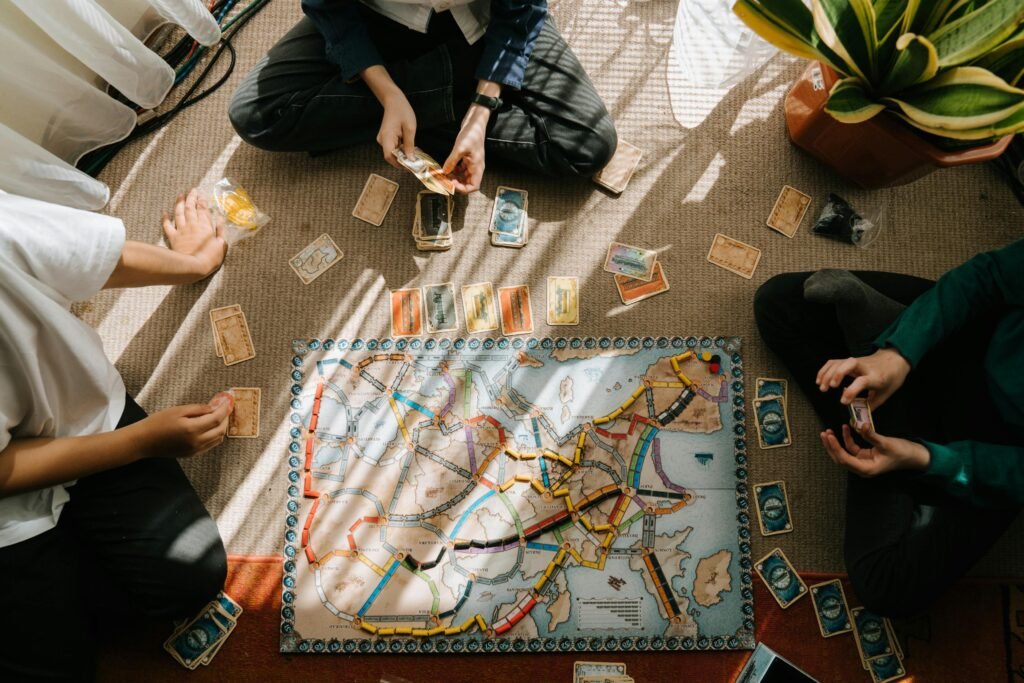
Board games combine strategy, creativity, and player interaction to create engaging experiences, with successful designs relying on meaningful choices, thorough playtesting, and understanding player dynamics to ensure fun and balanced gameplay for diverse audiences.
Ever wondered how some board games just click and feel so fun to play? I think it all boils down to smart design choices and lots of testing. In my experience, even amateur designers can create games players love by focusing on meaningful choices and playtesting like crazy. This post breaks down practical tips and honest advice on improving your game-making journey, whether you want to self-publish or pitch to publishers.
how playing more board games improves your design skills
Playing more board games is like a workout for your game-design brain. You learn what keeps players hooked and what makes a game drag. Ever noticed how some games just flow, while others feel like a chore? That feeling comes from smart design — and you can develop that sense by playing a bunch.
Here’s the deal: the more games you play, the better you understand player psychology. What choices feel meaningful? When does the tension rise or drop? Why do some mechanics frustrate rather than engage? Honestly, exploring these questions during play helps you spot gems and pitfalls in your own designs.
- Experience different styles: Dive into classics, party games, strategy, and thematic experiences. Each teaches unique lessons about pacing and player interaction.
- Analyze as you play: Make mental notes — or even jot down — what you like, what feels off, and what sparks joy or confusion.
- Experiment with roles: Try playing without following every rule exactly to discover how flexible the game really is. It often reveals hidden strengths or flaws.
Studies have shown that diverse exposure can boost creative thinking by up to 40%. So, by sampling lots of board games, you’re training your brain to spot opportunities and improvements fast. It’s kind of like giving your brain a bubble bath, washing away old patterns and making room for fresh ideas.
Ever thought: “What makes this game fun for *me*?” Or “How could this mechanic work differently?” Those questions are gold. Keep playing, keep questioning. Your next great design might be one aha! moment away.
why playtesting is critical and how to do it right
Playtesting is where your ideas meet real players — and it’s the secret sauce for great games. Without it, you’re basically guessing what works. Heck, even small tweaks can turn a so-so game into one players love.
You know that feeling when something just clicks? Playtesting helps you find those moments. It’s like a trial run where you spot confusing rules, balance problems, or boring bits early on.
- Start small: Test with a handful of friends who don’t mind giving honest feedback.
- Watch quietly: Sometimes players can’t explain why they got stuck, but their actions say it all.
- Ask open questions: “What confused you?” or “What felt exciting?” encourages real insights.
- Iterate fast: Change one thing at a time and test again to see what really moves the needle.
Remember, playtesting is more art than science. You’ll likely hear conflicting advice too — it’s normal. I thought—wait, maybe not every suggestion fits your vision, right? That’s why your gut still matters.
Data point: A 2021 survey of indie board game designers found 85% said regular playtesting improved player engagement and game balance significantly. It’s not just busy work — it’s game-changing work.
navigating setbacks and exploring publishing options
Every game designer hits rough patches — setbacks are part of the creative journey, honestly. You might face rules that don’t click, feedback that stings, or projects that stall. It’s normal to feel stuck or frustrated.
Here’s a trick: think of setbacks like a puzzle, not a roadblock. Each problem you solve brings you closer to a better game. It’s like journaling, but with your design process.
- Take breaks: Step away for a bit. Fresh eyes can reveal solutions you missed.
- Seek feedback: Friends, fellow designers, or online groups are gold mines for fresh perspectives.
- Be flexible: Sometimes the best ideas come from changing course mid-way.
- Celebrate progress: Small wins matter, even tiny improvements or clearer rules.
When it comes to publishing, you’ve got choices. Self-publishing gives you control but means handling everything, from marketing to distribution. Traditional publishing can open doors but often involves finding the right publisher and waiting.
Many designers try a mix: launch a limited self-published version and then pitch to publishers if the game gains traction. Heck, it’s like testing both lanes to see which one feels right for you.
Stat alert: According to a 2022 survey by the Game Manufacturers Association, over 60% of new designers start with self-publishing before exploring traditional routes.
Wrapping up
Designing board games is a rewarding journey full of learning and creativity. Remember, playing lots of games sharpens your skills, while playtesting helps you catch what works and what doesn’t. Setbacks? They’re just part of the process—think of them as puzzles to figure out, not roadblocks.
Publishing your game can feel tricky, but exploring your options slowly and staying flexible makes a big difference. It’s like navigating a fun maze—you’ll find the way that fits you best.
So, take your time and be kind to yourself. Hey, it’s okay not to have all the answers right now—just keep playing, testing, and imagining. Your next great idea could be just around the corner.
FAQ — your questions about board game design answered
What’s the best way to start designing a board game?
Begin by playing lots of games to understand what you enjoy, then try simple prototypes to test your ideas.
How important is playtesting for new games?
Playtesting is key; it helps you spot issues and improves player experience based on real feedback.
Can I publish my board game on my own?
Absolutely. Many designers start with self-publishing to keep control and learn about the market.
Is traditional publishing better than self-publishing?
Not necessarily — each has pros and cons. Traditional offers support but self-publishing gives you freedom.
Should I expect setbacks when designing games?
Yes, setbacks are normal and often lead to better ideas if you stay flexible and learn from them.
How do I get useful feedback without feeling discouraged?
Ask open-ended questions and remember feedback helps improve your game, not criticize you personally.

A certified Heal Your Life® Coach with 20+ years in education and emotional development. Supports gifted teens in navigating anxiety, perfectionism, and identity challenges, while equipping parents with practical tools for lasting transformation. Sessions blend emotional healing, mindset mastery, and strategic empowerment.



